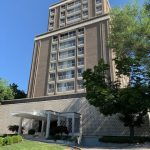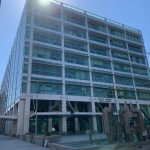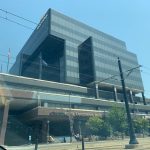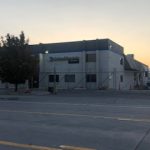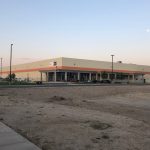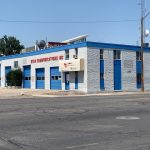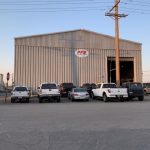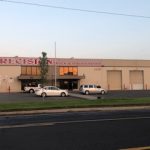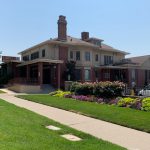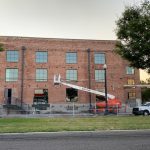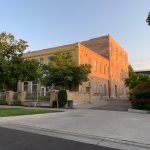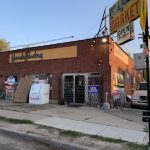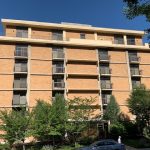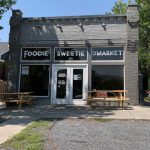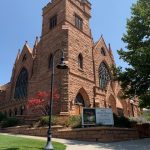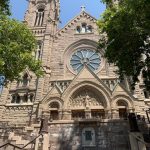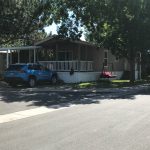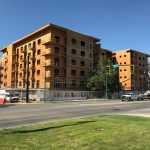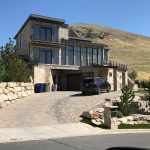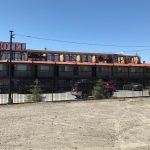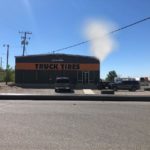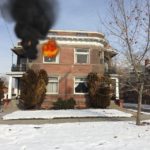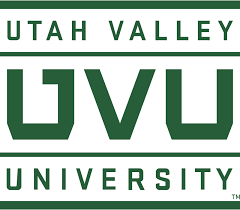
Fire Simulator
Explore the different construction types and considerations listed below. Click on the title of each construction type to visit an online “Fire Simulator.” Several images of each construction type are included in the online “Fire Simulator.” Select an image and use the “Fire Simulator” feature to build a scenario.
Type I Construction
Type I provides the highest level of protection from fire spread as well as structural collapse. All structural members are composed of noncombustible or limited-combustible materials with a high fire-resistive rating so that the structural members do not add to the fuel load.
Type I construction can be expected to remain structurally stable longer than other construction types during a fire and is the most collapse resistant. Reinforced concrete, precast concrete, and protected steel frame construction meet the criteria for Type I construction
Type I structures are often incorrectly referred to as being fireproof. While the structure will not burn, the structure may degrade from the effects of fire. Type I construction provides structural stability should a fire occur; however, the addition of combustible materials such as contents, furniture, and interior finishes can generate sufficient heat over time to weaken the building’s structural integrity. During a fire in a Type I structure, firefighters may experience the following conditions:
• Compartments can retain heat, contributing to the potential for rapid fire development
• Roofs may be extremely difficult to penetrate for ventilation purposes due to construction material and design.
• Windows may be non-operating, causing them to be very difficult to open for ventilation
Type II Construction
Buildings classified as Type II construction (also known as noncombustible construction) are composed of materials that will not contribute to fire development or spread. Type II construction materials do not meet the stricter requirements of those materials used in the Type I building classification but still do not add to the fuel load.
Steel components used in Type II do not need to be protected for the same lengths of time or have the same fire-resistance rating as Type I. The most common form of this construction type includes metal framing members, metal cladding, or concrete-block wall construction and unprotected, open web joists supporting metal roof decks. These buildings are more prone to collapse than Type I, because they are constructed of lighter-weight materials with lower fire-resistance ratings.
Fire Considerations
• With heavy fire it is just as important to get water above you on the roof members from the inside as it is to get water to the seat of the fire
• Potential for fire load can make your position untenable without warning
• Interior crews must report changing conditions to command
• If crews have to change bottles without finding the fire, consider re-grouping and outside fire streams
Type III Construction
Type III (also known as ordinary construction) is commonly found in mercantile, business, and residential structures and older schools. This construction type requires that exterior walls and structural members be constructed of noncombustible or limited combustible materials. Interior walls, columns, beams, floors, and roofs are completely or partially constructed of wood. Type III buildings may contain a number of conditions that can influence fire behavior, including the following:
• Void spaces inside the wooden channels that roof and truss systems create between wall studs are less protected than in Type I and II construction. Fire will spread through these spaces unless fire stops are installed in the void.
• Prefabricated wood truss systems similar to those used in Type V construction may also be found in new Type III structures. These systems may fail quickly when exposed to fire.
Fire Considerations:
• Get a line or lines to the seat of the fire quickly
• Vertical or horizontal ventilation
• Make sure there is no fire in the basement or cockloft
• If there is fire in the cockloft, it requires aggressive interior operations to open up the area and enough lines to put out the fire
Type IV Construction
Type IV (also known as heavy timber construction) is characterized by the use of large-dimensioned lumber or laminated wood. These dimensions vary depending on the particular building code in use at the time of construction. The dimensions of all structural elements, including columns, beams, joists, and girders, must adhere to minimum dimension sizing.
Type IV structures are extremely stable and resistant to collapse due to the sheer mass of their structural members. When involved in a fire, it is the timbers’ own char that reduces heat penetration to the inside of the beam.
Exterior walls are constructed of noncombustible materials. Interior building elements such as floors, walls, and roofs are constructed of solid or laminated wood with no concealed spaces. This lack of voids or concealed spaces helps prevent unseen fire travel.
Modern Type IV construction materials may include small-dimensioned lumber glued together to form a laminated structural element (sometimes called glue-laminated or glulam elements). These elements are extremely strong and are commonly found in churches, auditoriums, and other large facilities with vaulted or curved ceilings. Glue-laminated beams (glulam beams) may fail when exposed to fire because the heat may affect the glue holding the laminates together.
Type IV buildings may contain the following conditions that can affect their behavior during a fire:
• The high concentration of wood can contribute to the intensity of a fire once it starts.
• Collapse of masonry walls can be caused by loss of structural integrity of timbers.
Type V Construction
Type V, commonly known as wood frame. The exterior load-bearing walls are composed entirely of wood. A veneer of stucco, brick, or stone may be constructed over the wood framing. These veneers offer the appearance of Type III construction but provide little additional fire protection or structural support. Two examples of this type of construction are single-family residences and some multistory apartment buildings.
Type V construction consists of framing materials that include wood 2 x 4 or 2 x 6-inch studs. The outside of the framing members is covered with any number of materials as exterior siding. Depending upon the siding material, siding can either contribute to exterior fire spread or help to minimize fire spread. Nails, screws, or glue may be used to attach exterior siding. In the case of stucco, it is spread over a screen lattice that is attached to the framing studs.
Modern siding such as vinyl siding adds another petroleum-based fuel to the structural fire load. Vinyl siding is likely to produce dense, dark, oily, toxic smoke and will melt away from the side of the building. The siding covers combustible insulation or sheathing which becomes exposed to fire as the siding melts. These combustible materials may contribute to rapid fire development on the exterior of the structure and may extend fire spread to the interior.
Some structures include 6-inch exterior wall cavities for increased insulation. Homes with increased energy efficiency may use exterior insulation to provide the same or similar increased insulation.
Type V construction includes the use of a prefabricated wood truss system in place of solid floor joists. The truss system creates a large, open void between the floors of a structure, rather than the closed channel system found with solid wood floor joists. When wood I-beams are used, they are usually constructed of a central piece of thin plywood or wood composite, glued to two, 2 x 4-inch pieces, forming the top and bottom of the truss. These wood I-beams may have numerous holes cut in them to allow for electric, communication, and utility lines to be extended through them. Under fire conditions these plywood I-beams fail and burn much more rapidly than solid lumber.
Adhesives and other industrial glues are used more frequently in modern Type V construction to connect engineered structural members. Research shows that adhesives are no more or less reliable than other construction methods. Size-up, duration of the fire, and fireground actions at the scene are more important indicators of structural collapse than the construction methods used.
Fire considerations
• Important to make a quick aggressive fire attack to get water on the seat of the fire.
After the initial arrival report, the 360 follow-up report is the second part of the first-due incident commander’s standard communications responsibility. The video at left will discuss the elements of the 360 follow-up report, and provide some examples as well as a few lessons learned from recent incidents.
Transfer of Command
This short presentation will provide details about situations in which command should be transferred, as well as how, why, and when to complete the transfer. The presentation concludes with an example of a Transfer of Command.
The video at right represents an example of a first arriving engine to a small commercial fire, including the initial officer’s arrival report, 360, follow-up report, initial assignments, thoughts, and actions. The video concludes with a face-to-face transfer of command with the first arriving Battalion Chief. The McNeil prop in this video represents a noncombustible auto shop with bay doors facing the Charlie side. The fire is in the auto bays on the Charlie side with heavy smoke showing. The Alpha side contains the offices in the building. For reference, please refer to the Operational Guidelines 04-03 A – E and 04-30 C for this exercise.
The RIC Officer plays an important role in firefighter safety and survival at the scene of a working fire. The brief video at left introduces some of the key principles and concepts of a RIC-specific size-up, cache establishment and team setup.
Educational Resources
Contact the Utah Valley University Office of Admissions
Utah Valley University
800 West University Parkway | Orem, UT 84058
Request more information from Columbia Southern University
Columbia Southern University
21982 University Lane | Orange Beach, AL 36561


